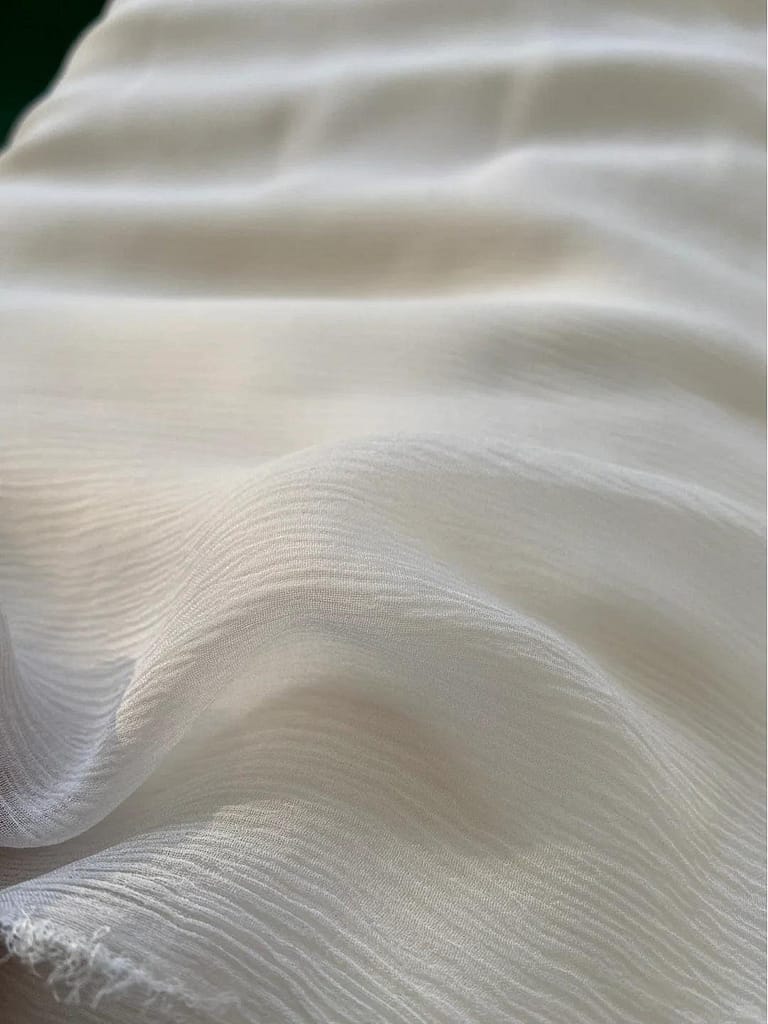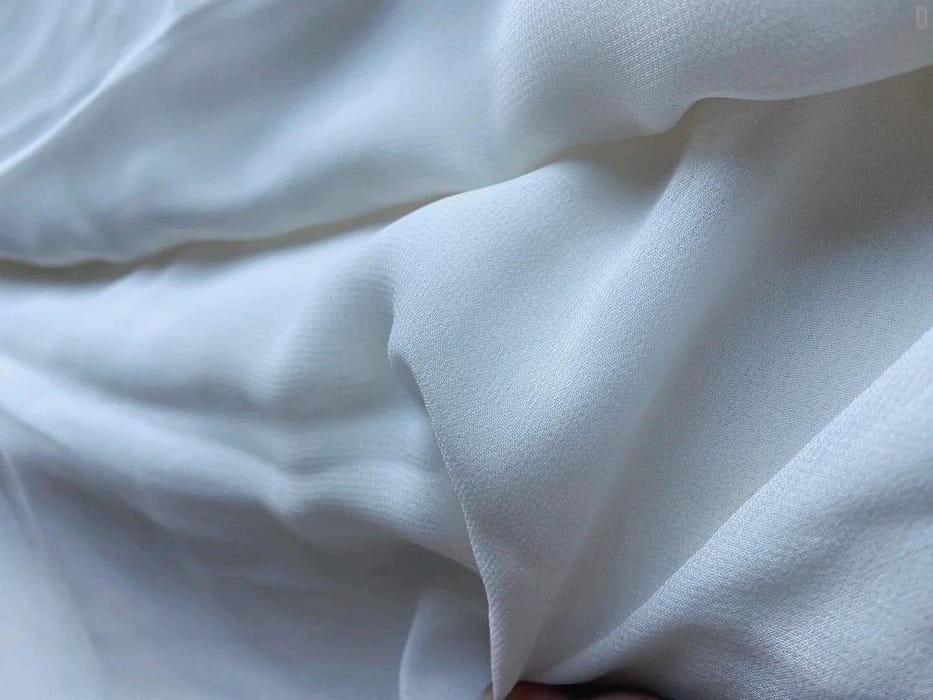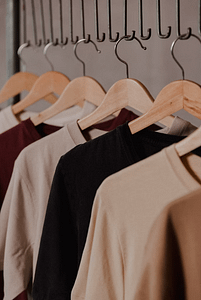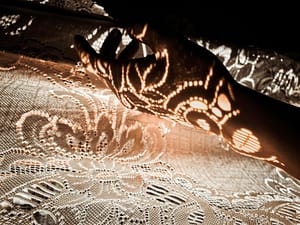Introduction
Georgette fabric is one of fashion’s most beloved textiles, known for its delicate beauty and remarkable versatility. Characterized by its lightweight, sheer quality and subtle crinkled surface, it offers a perfect balance between elegance and practicality. Its flowing drape makes it an ideal choice for dresses, gowns, and scarves, while its strength and adaptability allow it to be used in everyday clothing as well as luxury fashion. Whether crafted from fine silk or affordable synthetic fibers, Georgette continues to charm designers and wearers alike with its timeless appeal.
Origins and History
Georgette fabric traces its beginnings to early 20th-century France, where it was introduced by French dressmaker Georgette de la Plante. At the time, luxury fabrics like silk chiffon were already popular, but de la Plante sought to create something with more texture, durability, and character. By twisting silk yarns tightly in both the warp and weft, she achieved a slightly rough, crinkled surface that gave the fabric its distinctive look and feel.
Initially, Georgette was considered a fabric of sophistication, embraced by the haute couture houses of Paris for evening wear and flowing dresses. Its lightness and graceful drape made it a favorite for creating feminine silhouettes without sacrificing comfort. Over the decades, as textile technology advanced, Georgette began to be woven not only from silk but also from synthetic fibers like polyester, viscose, and nylon, making it more affordable and accessible to a wider audience.
Today, Georgette is celebrated worldwide as a fabric that bridges tradition and modernity, retaining its heritage of elegance while adapting to contemporary fashion needs.
Unique Characteristics and Advantages
Georgette fabric stands out for its distinctive qualities, making it a favorite in both everyday wear and high fashion. Its charm lies not only in its appearance but also in its performance as a versatile textile.
- Lightweight and Sheer – Georgette is airy and semi-transparent, ideal for layering or creating garments with a delicate, ethereal effect.
- Textured Surface – The high-twist yarns give it a slightly crinkled, pebbly texture, adding depth and visual interest compared to smoother fabrics like chiffon.
- Fluid Drape – Despite its lightness, Georgette drapes gracefully, making it perfect for flowing dresses, skirts, and scarves.
- Durability – Thanks to its twisted yarns and plain weave structure, Georgette is surprisingly strong for such a delicate-looking fabric.
- Color Absorbency – The fibers readily take on dyes, resulting in rich, vibrant colors and striking prints.
- Versatility – Available in silk, polyester, rayon, and blends, Georgette can be tailored to meet different budgets and design requirements.

Types of Georgette
Over the years, Georgette has evolved into a wide variety of forms, each tailored to different fashion needs and budgets. While they all share the fabric’s signature lightweight feel and fluid drape, the choice of fiber, weave, or embellishment gives each type a unique personality.
- Silk Georgette – The original and most luxurious version, made entirely from silk fibers. It is prized for its natural sheen, softness, and breathability, making it ideal for high-end fashion, evening gowns, and bridal wear.

- Polyester Georgette – A more affordable alternative that offers durability and easy maintenance. It is widely used in ready-to-wear clothing and holds color exceptionally well, making it a favorite for printed designs.

- Satin Georgette – Combines the flowing, lightweight quality of traditional Georgette with a subtle satin-like sheen. It offers a more lustrous appearance, ideal for evening gowns, cocktail dresses, and luxurious overlays.

- Embroidered or Embellished Georgette – Decorated with threadwork, sequins, or beadwork, this type is commonly used for formal outfits, wedding attire, and festive garments.
Production Process of Georgette
The creation of Georgette fabric involves a series of careful steps that transform raw fibers into a lightweight, textured textile known for its crinkled finish and graceful drape. Below is a breakdown of the process:
| Step | Description |
|---|---|
| 1. Fiber Selection | High-quality silk is chosen for luxury Georgette, while polyester, rayon, or nylon are used for cost-effective alternatives. |
| 2. Yarn Preparation | Fibers are spun into high-twist yarns in both warp and weft directions, creating the fabric’s signature crinkled texture. |
| 3. Weaving | A plain weave technique interlaces the twisted yarns, producing a sheer yet durable fabric. |
| 4. Finishing | The fabric is dyed or printed, often achieving vibrant colors; some versions are embroidered or embellished. |
| 5. Quality Control | Final checks ensure consistency, durability, and smooth drape before the fabric is ready for use. |
Through this process, Georgette achieves its distinctive qualities—lightweight, slightly textured, and beautifully flowing—making it a fabric that balances elegance with strength.
Common Uses of Georgette in Fashion
Georgette’s lightweight texture and flowing drape make it an incredibly versatile fabric in the fashion world. It seamlessly transitions between casual wear, formal attire, and decorative applications.
- Dresses and Gowns – Georgette is a popular choice for evening gowns, cocktail dresses, and wedding attire due to its elegant fall and subtle sheerness.
- Blouses and Tops – Its breathable nature and delicate appearance make it ideal for stylish blouses that balance comfort with sophistication.
- Scarves and Shawls – The airy feel of Georgette lends itself beautifully to accessories that are both functional and decorative.
- Saris and Traditional Wear – In South Asian fashion, Georgette is prized for saris and lehengas, offering grace, comfort, and ease of movement.
- Layering and Overlays – Because of its semi-transparency, Georgette is often used as an overlay on dresses and skirts to create dimension and elegance.
- Decorative Applications – Beyond clothing, Georgette is also used for drapes, curtains, and event decorations, where its light, floating quality enhances visual appeal.
From haute couture to everyday outfits, Georgette continues to be a go-to fabric for designers who want to combine delicacy with durability.

Care and Maintenance Tips
Although Georgette is relatively durable for a sheer fabric, it requires thoughtful care to maintain its beauty and longevity. Proper handling ensures that garments and accessories retain their drape, color, and texture.
- Washing – Hand washing in cold water with a mild detergent is recommended. For synthetic Georgette, machine washing on a gentle cycle may be possible, but silk Georgette should always be washed by hand.
- Drying – Avoid wringing the fabric to prevent distortion. Instead, lay it flat on a towel or hang it to air-dry away from direct sunlight to preserve colors.
- Ironing – Use a low-heat setting with steam, and always place a pressing cloth between the iron and the fabric to prevent damage or shine.
- Storage – Store Georgette garments in a cool, dry place, preferably hung to avoid wrinkles. For delicate silk pieces, cover them with a breathable garment bag.
- Professional Care – For heavily embellished or embroidered Georgette, dry cleaning is often the safest option.
Conclusion
Georgette fabric is a true embodiment of delicacy and versatility. With its lightweight texture, graceful drape, and subtle sheen, it has earned a lasting place in both modern and traditional fashion. From flowing gowns and chic blouses to elegant saris and decorative accents, Georgette proves its adaptability across styles and cultures. While it requires gentle care to preserve its unique qualities, the rewards are garments that remain timeless in beauty and function.
In essence, Georgette is more than just a fabric—it’s a design staple that continues to inspire creativity, offering both elegance and practicality for generations of fashion enthusiasts.






